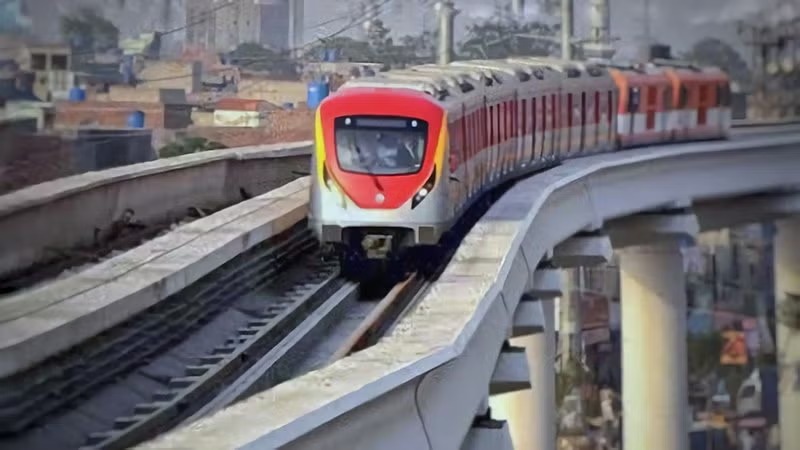LAHORE: Orange Line Metro Train (OLMT), first electric railway transportation project under China Pakistan Economic Corridor, has completed milestone of more than 270 million ridership during five years since its operation in 2020 till November 2025.
Putting healthy impacts on local transportation facility, traffic easiness and environment protection in the provincial metropolis, China-operated metro train has also executed 512180 trips with safe operation of 1800 days. The OLMT is providing urban travelling experience to more than 2,50,000 commuters daily keeping punctuality and trip efficiency at rate of 99 percent successfully.
Metro train is marked with easy and speedy travelling experience for Lahore, brimming with population of around 12.6 million. Usually using various mode of motorized commutation ranging from motorbike, car, rickshaw, online taxi and bus, it takes more than 80 minutes to 90 minutes if the journey starts from Dera Gujjran, the starting point of metro train, to Ali Town, the ending point of metro train that is spreading over 27.1 km. And in case commuter encounter traffic gridlock, journey time prolonged and turned out to be a nightmare. Since the day, metro train is open for public use, commute time is merely 45 minutes. Time cut in long and tedious journey has liberated people from commutation stress and traffic jams.
Metro train is the cheapest mode of travelling with luxury and comfort. It saves public money of Rs 60.4 billion per annum, as 2,50,000 people use the facility daily.
Contrary to this, by using road trips on motorized vehicles, people are compelled to put heavy burden on their daily budget. Particularly when the inflation is unabated and the transportation cost is on rise, the commutation expense has made common life highly challengeable. Punjab Masstransit Authority (PMTA) GM Operations Muhammad Ozair Shah said that according to per capita income, almost 8 percent went in spending on transportation by common man. Given the pollution scenario in which air and noise hazardousness stay alarming in Lahore, capital of Punjab, newly-inaugurated electrical-based Metro train running on 108 MV electricity is proving as a gift to 12.6 million citizens of highly urbanized city of South Asia.
Having done Environment Impact Assessment (EIA), EPA official said that we consider Metro train project a green transportation facility with no emission and noise. It also helps mitigate smog effects in the city, he added.
Another positive impact that metro train is going to make is the reduction of noise pollution that has gripped the entire city. It is revealed that the noise pollution level has crossed the World Health Organisation’s (WHO) acceptable threshold of 60-65 dB in various areas of Lahore.
Dr Jamil Bhatti, a senior ENT Specialist, claimed that noise pollution was playing havoc to the health of public turning them into patients. Suffering from hearing issues, stress and depression has been taking heavy toll on mental and physical health of common man, he added
“Continuous noise can afflict hearing power of both adults and children,” he explained, adding that many patients complaining of hearing loss come to the hospital daily.
One way of bringing the idea of urban sustainable mobility into life is to develop rail-based public transportation systems as it has happened in Lahore Metro Train. The new electrical Rail-based system allows increasing efficiency of transport in two ways: through technical improvement of infrastructure and vehicles and, above all, through introducing a change in the modal split which limits the use of private cars and reduces congestion and its negative consequences, including the social ones.
Rahat Sarfarz, a wheelchair user, told Gwadar Pro that since the day he learnt that metro train was PWD-friendly transport, his dream to travel freely without anybody help had come true.
“For many persons with disabilities, this is not just fiction, but a daily struggle that is all too real: a large proportion of urban and inter-urban transport systems remain either completely off-limits or incredibly difficult to use for passengers with disabilities, turning even the shortest trip into a logistical nightmare,” he added.
Shugufta Rahim, visually- impaired, working at private company, said that she had to travel with the help of her brother daily to reach at workplace near Chuburji. “Before closing time, my brother had to pick me up to return home. The reason is that building is accessible for PWDs but public transport is devoid of freedom of movement for physically-challenged people,” she added. –Agencies





